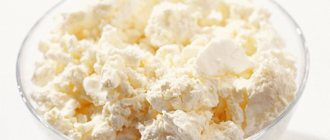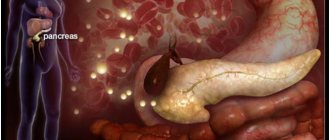Stomach biopsy: indications, contraindications, procedure
In order to exclude or confirm suspicion of cancer, a biopsy is performed. This is taking material for the purpose of further study. The procedure is mandatory in oncology. As a result of the study, the doctor not only makes an accurate diagnosis, but also classifies the type of tumor, which influences the choice of treatment tactics in the future.
A gastric biopsy is performed to diagnose not only cancer, but also all others. The procedure is carried out in conjunction with esophagogastroduodenoscopy, which allows assessing the condition of the mucosa.
Endoscopy has made it possible to more accurately sample material, as well as significantly minimize the mucous membrane.
Indications
The procedure is indicated in a number of cases:
- Stomach ulcer;
- Ulcers of the mucous membrane that do not heal for a long time;
- Changes in the mucosa;
- Chronic gastritis;
- Tumor neoplasms;
- Polyps;
- Previously performed oncological operations;
- Sudden, unexplained weight loss.
The procedure is done to achieve the following goals:
- Characterize the type of epithelial dysplasia;
- Study of the morphology of the neoplasm to determine its nature;
- Determination of inflammatory activity;
- Identification of spiral-shaped gram-negative bacteria;
- Monitoring the effectiveness of previously prescribed treatment for an oncological diagnosis.
What to do after a biopsy
Stomach cancer at certain stages is subject to surgical treatment. The size of the tumor and its characteristics determine whether the stomach will be removed completely (gastrectomy) or partially (resection). Why is a histological examination performed - incl. to select the optimal treatment tactics.
For stomach cancer, in some cases, chemotherapy and radiation therapy are indicated. They reduce the size of a large tumor to an operable size, and make it possible to remove the remains of malignant cells after a gastrectomy.
The prognosis for recovery depends on a number of factors: the patient’s age, the presence of concomitant diseases, the presence of metastases, and the degree of malignancy of the tumor. Late diagnosis of the disease does not mean that it is a hopeless case. Doctors may suggest immunotherapy, or palliative care.
has been organizing high-quality individual medical care for many years.
Over the years of work, we have accumulated statistics on leading foreign clinics and are ready to recommend to patients for pregnancy management after breast cancer only those medical centers where they will truly provide the most effective care.
Contraindications
All existing contraindications are included in 2 groups - absolute and relative.
The first include:
- Narrowing of the lumen of the esophagus, preventing the movement of the endoscope;
- Acute somatic diseases;
- Aortic aneurysm.
Indicators of the second group:
- Inflammation of the nasopharynx;
- Fever;
- Hypertensive crisis;
- Poor blood clotting;
- Epilepsy;
- Mental illnesses, some others.
Preparation for the procedure
There is no need to prepare specially for the procedure. You just need to follow the general rules necessary before gastroscopy.
Recommended 7-10 days before the procedure:
- Eliminate the consumption of alcoholic beverages, spicy and spicy foods, reduce the proportion of foods that can cause increased gas formation;
- Do not eat six hours before the biopsy;
- Don't drink two hours before.
In some cases, it is necessary to rinse the stomach before the procedure.
It is necessary that the doctor explains to the patient the essence of the procedure and its purpose, and also obtains his written consent.
Before the procedure, the doctor must find out whether the patient has allergic reactions to medications. Anesthetics and sedatives are used during the procedure.
Where to go
Taking a biopsy for FGDS and other forms of endoscopy is possible in many medical centers, one of which is ICLINIC. Our medical center is equipped with innovative endoscopic equipment with high resolution, allowing high-quality visual control during procedures. The manipulation is safe and practically painless, the risk of complications after it is minimal. Thanks to the professionalism and practical experience of endoscopists, taking a biopsy during FGDS takes no more than 10 minutes.
During fibrogastroduodenoscopy, if necessary, microsurgery can be performed (removal of polyps, suturing of blood vessels, removal of foreign objects). The biopsy is performed using modern sterile instruments. We make a video recording for a detailed clarification and assessment of the picture obtained during the diagnosis in order to draw up a competent expert opinion. If you require a biopsy, contact our doctors to get the most accurate results in the shortest possible time. Our specialists will carry out the procedure quickly, painlessly and make an accurate diagnosis, confirmed by photographs and histological data.
Cost array(2) { ["STOIMOST"]=> array(37) { ["ID"]=> string(1) "1" ["TIMESTAMP_X"]=> string(19) "2017-06-29 14 :40:11" ["IBLOCK_ID"]=> string(1) "2" ["NAME"]=> string(18) "Cost" ["ACTIVE"]=> string(1) "Y" ["SORT "]=> string(3) "500" ["CODE"]=> string(8) "STOIMOST" ["DEFAULT_VALUE"]=> string(0) "" ["PROPERTY_TYPE"]=> string(1) " N" ["ROW_COUNT"]=> string(1) "1" ["COL_COUNT"]=> string(2) "30" ["LIST_TYPE"]=> string(1) "L" ["MULTIPLE"]= > string(1) "N" ["XML_ID"]=> NULL ["FILE_TYPE"]=> string(0) "" ["MULTIPLE_CNT"]=> string(1) "5" ["TMP_ID"]=> NULL ["LINK_IBLOCK_ID"]=> string(1) "0" ["WITH_DESCRIPTION"]=> string(1) "N" ["SEARCHABLE"]=> string(1) "N" ["FILTRABLE"]=> string(1) "N" ["IS_REQUIRED"]=> string(1) "N" ["VERSION"]=> string(1) "1" ["USER_TYPE"]=> NULL ["USER_TYPE_SETTINGS"]=> NULL ["HINT"]=> string(0) "" ["PROPERTY_VALUE_ID"]=> string(2) "36" ["VALUE"]=> string(4) "1200" ["DESCRIPTION"]=> string (0) "" ["VALUE_ENUM"]=> NULL ["VALUE_XML_ID"]=> NULL ["VALUE_SORT"]=> NULL ["~VALUE"]=> string(4) "1200" ["~DESCRIPTION"] => string(0) "" ["~NAME"]=> string(18) "Value" ["~DEFAULT_VALUE"]=> string(0) "" ["DISPLAY_VALUE"]=> string(4) "1200 " } ["DOPOLN"]=> array(38) { ["ID"]=> string(1) "7" ["TIMESTAMP_X"]=> string(19) "2017-08-21 12:01:50 " ["IBLOCK_ID"]=> string(1) "2" ["NAME"]=> string(60) "Is an additional ACTIVE"]=> string(1) "Y" ["SORT"]=> string( 3) "500" ["CODE"]=> string(6) "DOPOLN" ["DEFAULT_VALUE"]=> string(0) "" ["PROPERTY_TYPE"]=> string(1) "L" ["ROW_COUNT" ]=> string(1) "1" ["COL_COUNT"]=> string(2) "30" ["LIST_TYPE"]=> string(1) "L" ["MULTIPLE"]=> string(1) " N" ["XML_ID"]=> NULL ["FILE_TYPE"]=> string(0) "" ["MULTIPLE_CNT"]=> string(1) "5" ["TMP_ID"]=> NULL ["LINK_IBLOCK_ID"] => string(1) "0" ["WITH_DESCRIPTION"]=> string(1) "N" ["SEARCHABLE"]=> string(1) "N" ["FILTRABLE"]=> string(1) "N " ["IS_REQUIRED"]=> string(1) "N" ["VERSION"]=> string(1) "1" ["USER_TYPE"]=> NULL ["USER_TYPE_SETTINGS"]=> NULL ["HINT"] => string(0) "" ["PROPERTY_VALUE_ID"]=> string(3) "770" ["VALUE"]=> string(4) "Yes" ["DESCRIPTION"]=> NULL ["VALUE_ENUM"]= > string(4) "Yes" ["VALUE_XML_ID"]=> string(32) "5de4f0c1c60227ed88acbbcadc479f5f" ["VALUE_SORT"]=> string(3) "500" ["VALUE_ENUM_ID"]=> string(1) "1" ["~VALUE"]=> string(4) "Yes" ["~DESCRIPTION"]=> NULL ["~NAME"]=> string(60) "Is an additional ~DEFAULT_VALUE"]=> string(0) " "["DISPLAY_VALUE"]=> string(4) "Yes" } }
- 1200 rub.
Discounts
Discount for FC Zenit fans up to 10% (discount depends on the type of discount card).
Methods for collecting biomaterial
The purpose of a biopsy is to collect material (biopsy) for subsequent study. This can be done by 2 methods - surgical and endoscopic.
During surgery, the removed tissue is sent to the laboratory. A doctor examining it under a microscope makes a conclusion. The operation is resumed, if necessary, with adjustments.
One common method is endoscopy. Here they use a fiberscope, a flexible probe with a camera and an LED flashlight. This type of biopsy is called a targeted biopsy, where the doctor uses a control unit to control the movement of the fiberscope. Targeted biopsy significantly reduces risks.
Possible complications
Most often, after collecting the material, no traces remain. Rarely, slight bleeding occurs, but it resolves on its own and does not require additional medical attention.
Complications after gastric biopsy occur in less than 1% of patients
If after the biopsy the patient feels unwell, has nausea or vomits blood, then he needs to go to the hospital. Although the probability is extremely low, the following complications are still possible:
Stomach diseases
- damage to the stomach or esophagus (due to the motor activity of the subject during the procedure);
- development of septic shock;
- bleeding resulting from a rupture of a vessel when taking a biopsy;
- development of aspiration pneumonia. It develops when vomit enters the airways, causing infection. That is why the patient must breathe deeply through his nose and follow the specialist’s instructions.
When an infection occurs, the patient experiences fever and pain. Inflammation is accompanied by exudation. As a result of poor-quality manipulations, abrasions and swelling occur on the mucous membrane.
Carrying out
A gastric biopsy is performed on an outpatient basis, usually under local anesthesia.
The patient is on the left side. The endoscope is inserted, one by one examining all areas of the mucosa. The air used straightens the folds of the organ.
Having reached the area of interest, the doctor, using biopsy forceps, which are located in the fiberscope, plucks off the material for analysis. There should be several collection points.
If necessary, another technique, chromatogastroscopy, can be used to determine the boundaries between zones of the surface under study. The dye used here highlights the mutated area, and a biopsy is performed on its periphery.
After the procedure, it is recommended not to eat for two hours and avoid eating hot foods.
Bladder biopsy
Biopsy examination
A piece of tissue taken for analysis is placed in a special container and sent to the laboratory. In it, the biopsy specimen is fixed in formalin and embedded in paraffin or frozen.
Next, sections of the biopsy are taken and placed on a glass slide; after staining and drying, a microscope is used for examination.
The conclusion stated:
- Characteristics of epithelial tissue;
- Thickness of the mucous membrane;
- Epithelial dysplasia or metaplasia;
- Features of inflammation;
- Mutated cells, their characteristics and localization;
- Spiral gram-negative bacterium;
- Contamination level.
Stomach cancer may be indicated by:
- Cell shape;
- Their sizes;
- Size and fragmentation of nuclei;
- The presence of several cores;
- Pathologies in the cytoplasm.
As a rule, the results of the study are ready ten to fourteen days after it is conducted. If the biopsy is urgent - on the same day, but the probability of error is higher.
Kinds
Esophageal biopsy is divided into targeted and non-targeted. The essence of the latter option is to collect particles of tissue structures from various areas of the tube. Moreover, sometimes biological materials are taken from the entire length of the organ.
Consequences of a biopsy
A biopsy is a method of diagnostic examination of a sample of body tissue taken from a patient surgically.
This happens during the primary diagnostic procedure, examining the condition of the mucous membrane in the presence of precancerous leukoplakia or Barrett's esophagus. During a non-targeted biopsy, the specialist does not need to visually monitor the tissue sample collection.
Targeted manipulation is advisable when a suspicious polyp or tumor-like neoplasm is detected. Therefore, biological material is taken directly from the tissue of the growth.
A biopsy of the esophageal tube is also classified according to the technical method of sampling. Because of this, the manipulation is divided into aspiration, when a needle of the same name is used, pinching using special forceps, and looping. In some cases, several types of biopsy examination are performed at once.
Possible consequences
The qualifications of the doctor and the use of modern medical equipment significantly minimize the risks of complications.
But they still exist:
- Bleeding from the biopsy sampling area;
- Perforation of the mucosa;
- Allergy to anesthetic;
- Damage to the oral mucosa, some others.
Possible complications of the biopsy procedure may include:
- Damaged vessel;
- Aspiration pneumonia;
- Inflammation of the upper parts of the digestive system.






